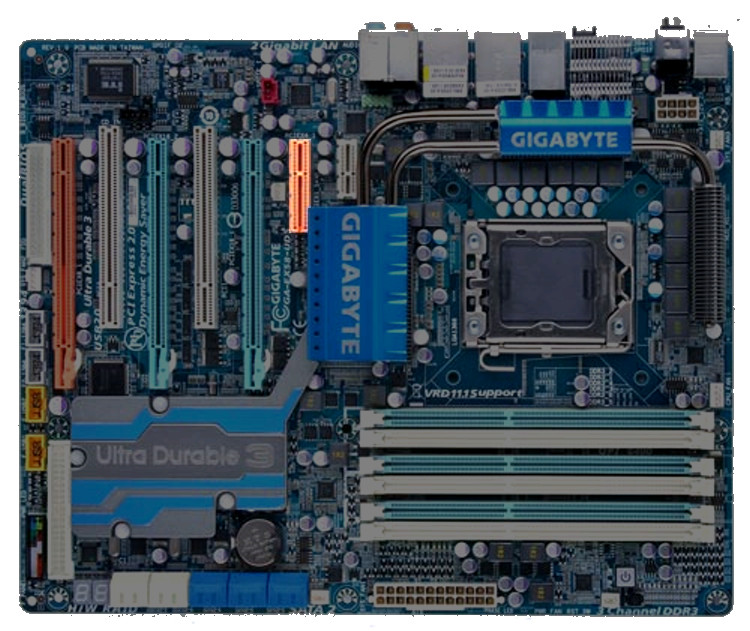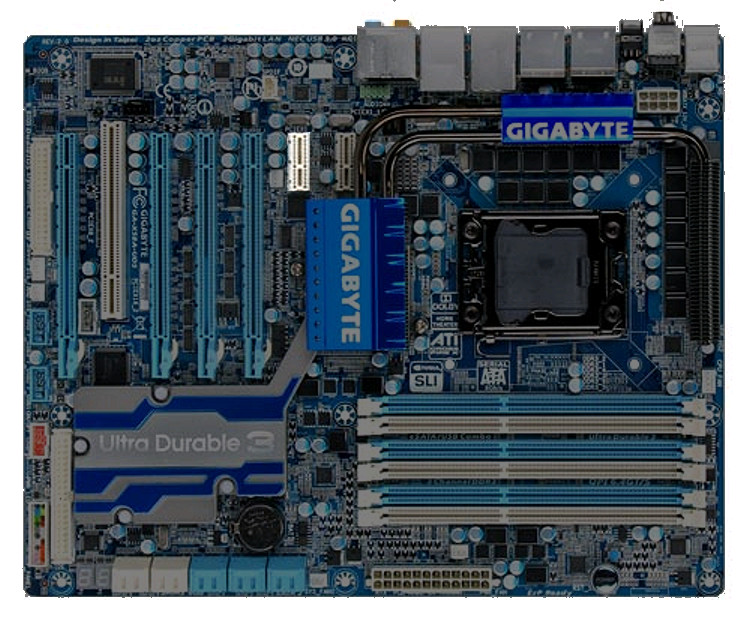PCI Express 3.0: On Motherboards By This Time Next Year?
After an unfortunate series of untimely delays, the folks behind PCI Express 3.0 believe they've worked out the kinks that have kept next-generation connectivity from achieving backwards compatibility with PCIe 2.0. We take a look at the tech to come.
Motherboard-Based Interconnects
AMD and Intel have never been particularly chatty when it comes to detailing the interfaces they use to communicate between chipset components, or even been logic blocks within a northbridge/southbridge. We know the data rates at which those connections run, and we know that they're generally designed to be as bottleneck-free as possible. Sometimes we even know where a certain piece of logic came from, such as the Silicon Logic-based SATA controller AMD used in its SB600. But we're often kept in the dark as to the technology used in building the bridge between components. PCI Express 3.0 certainly presents itself as a very attractive solution, similar to the A-Link interface AMD employs.
The recent emergence of USB 3.0 and SATA 6Gb/s controllers on a number of third-party motherboards may provide a glimpse into this process. Because Intel's X58 chipset does not provide native support for either technology, companies like Gigabyte had to integrate discrete controllers onto their boards using available connectivity.
Gigabyte’s EX58-UD5 motherboard did not have USB 3.0 or SATA 6Gb/s. However, it did include a x4 PCI Express slot:
Gigabyte replaced the EX58-UD5 with the X58A-UD5, which has support for two USB 3.0 and two SATA 6Gb/s ports. Where did Gigabyte find the bandwidth to support the new technologies? By using one lane of PCI Express 2.0 connectivity for each controller, cutting back on available external connectivity while adding functionality to the board, overall.
Besides the addition of support for USB 3.0 and SATA 6Gb/s, the only other real difference between the two motherboards is that the newer offering had its x4 slot removed.
Will PCI Express 3.0, like the standards that preceded it, wind up serving as an enabler of future technologies and controllers that won't make it into the next generation of chipsets as integrated features? Almost certainly.
Get Tom's Hardware's best news and in-depth reviews, straight to your inbox.
Current page: Motherboard-Based Interconnects
Prev Page Graphics Next Page CUDA And Parallel Processing-
cmcghee358 Good article with some nice teases. Seems us regular users of high end machines won't see a worth until 2012. Just in time for my next build!Reply -
tony singh What the..... pcie3 already devoloped & most games graphics are still of geforce 7 level thnk u consoles..Reply -
iqvl Good news to peoples like me who haven't spent any money on PCIE 2.0 DX11 card due to nVidia's delay in shipping GTX460.Reply
Can't wait to see PCIE 3.0, native USB3/SATA3, DDR4, quad channel and faster&cheaper SSD next year.
In addition, I hate unreasonably priced buggy HDMI and would also like to see the Ethernet cable(cheap, fast and exceptional) based monitors as soon as possible.
http://www.tomshardware.com/news/ethernet-cable-hdmi-displayport-hdbaset,10784.html
One more tech that I can't wait to see: http://www.tomshardware.com/news/silicon-photonics-laser-light-beams,10961.html
WOW, so much new techs to be expected next year! -
ytoledano Processor speed *is* increasing exponentially! Even a 5% year-on-year increase is exponential.Reply -
Casper42 I havent read this entire article but on a related note I was told that within the Sandy Bridge family, at least on the server side, the higher end products will get PCIe 3.0.Reply
And if you think the Core i3/5/7 desktop naming is confusing now, wait till Intel starts releasing all their Sandy Bridge Server chips. Its going to be even worse I think.
And while we're talking about futures, 32GB DIMMs will be out for the server market most likely before the end of this year. If 3D Stacking and Load Reducing DIMMs remain on track, we could see 128GB on a single DIMM around 2013, which is when DDR4 is slated to come out as well. -
JonnyDough ReplyAfter an unfortunate series of untimely delays, the folks behind PCI Express 3.0 believe they've worked out the kinks that have kept next-generation connectivity from achieving backwards compatibility with PCIe 2.0. We take a look at the tech to come.
It's nice to see the backwards compatibility and cost be key factors in the decision making. Especially considering that devices won't be able to saturate it for many years to come. -
rohitbaran ReplyNothing in the world of graphics is getting smaller. Displays are getting larger, high definition is replacing standard definition, the textures used in games are becoming even more detailed and intricate.
Even the graphics cards are getting bigger! :lol: -
iqvl rohitbaranEven the graphics cards are getting bigger!I believe that he meant gfx size per performance. :)Reply -
Tamz_msc ReplyWe do not feel that the need exists today for the latest and greatest graphics cards to sport 16-lane PCI Express 3.0 interfaces.
Glad you said today, since when Crysis 3 comes along its all back to the drawing board, again.

